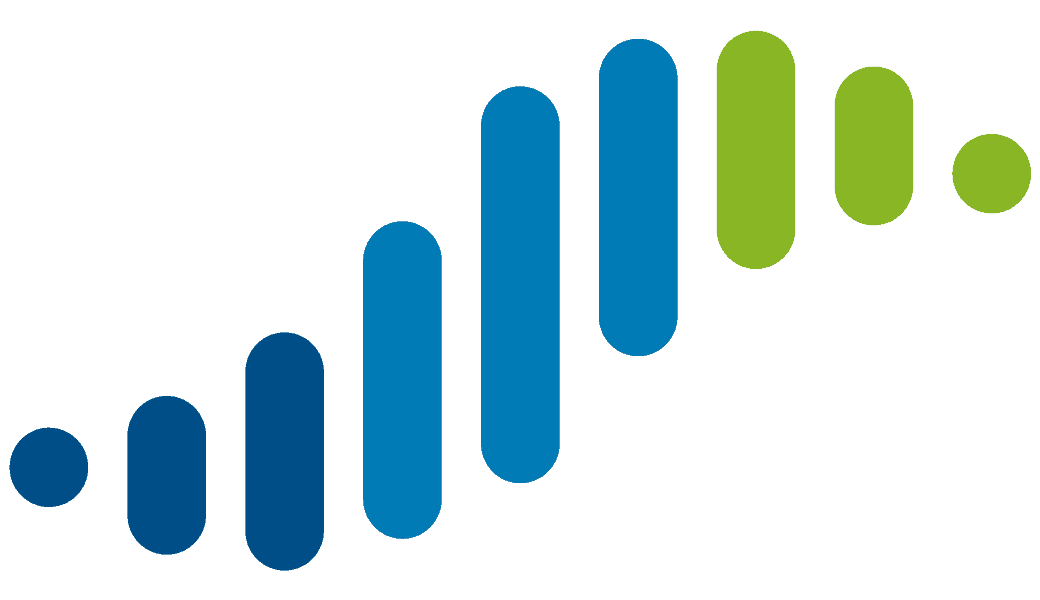EnviSuM
Stricter environmental limits on sulphur emissions of ships made
Baltic Sea a global test case A new regulation to limit sulphur emissions from ships by the International Maritime Organisation (IMO) entered into force in 2015. The purpose of the so-called SECA regulation (Sulphur Emission Control Area) is to reduce the air pollution and thus the negative effects of shipping exhausts on human health and on the environment. Since then, all ships sailing the Baltic Sea need to comply with stricter limits than elsewhere, and in 2020 these stricter sulphur limits are implemented worldwide. This situation turned the Baltic Sea into a test region for environmental limits covering larger areas of several countries.
Decision makers in policy and shipping industry need solid information
Before SECA was implemented, there were heavy debates in the maritime sector about the costs for ship-owners to comply with the regulation. Ship-owners bear these costs, no matter how they reduce the sulphur emissions – be it by cleaning the exhaust gas or by using higher quality fuels. These costs are transferred to their customers and ultimately to the consumers. This discussion showed that there is a need for up-to-date science-based information to guide future legislation on shipping emissions – among decision makers in both policy and business. Against this background, the Interreg project EnviSuM developed and applied state-of the-art measurement methods and models.
Budgets
in numbers
-
3.22MillionTotal
-
2.22MillionErdf
-
0.00MillionEni + Russia
-
0.17MillionNorway
Achievements
Sound measuring and modelling shows: environmental regulation works
Several research institutions with support of businesses and public administration from altogether seven countries took stock of the effects of SECA on human health, environment and the economy, namely the shipping sector. To this end, they used local and pan-Baltic measurements of the air composition and combined them with different models. These studies found that 1) negative economic effects of SECA concerning the rise of fuel costs and modal shift from sea to land did not occur as it was predicted; 2) the health, environmental and economic benefits of SECA outweigh the costs; 3) tight environmental regulation can encourage innovation: the reduction in emissions can create business benefits to the maritime cluster. All in all, the test case of stricter environmental limits for ships run in the Baltic Sea between 2015 and 2020 provided sound scientific evidence that the regulation works well without heavily impairing business. The results of the EnviSum project can serve decision makers in policy and business all across the globe as all coastal countries are facing the sulphur cap in 2020 and possibly new environmental regulation in the future.
Three large port cities get precise model studies on ship-borne air pollution
Next to the overall results of the model studies, the project partners carried out local studies on air pollution from ships, namely in Gothenburg (Sweden), the Tri-City (Poland) and St. Petersburg (Russia). In Poland, it was the first time that effects on shipping emissions on a local scale were inventorised and modelled. In Sweden, the local study showed that the sulphur emissions from ships decreased by 70 % within only one year, the year that the SECA regulation entered into force.
Decision support for the shipping industry
The project also addressed the shipping industry's compliance with the SECA regulation. The partners examined how efficient the different techniques for removing pollution from exhaust gases are. An online tool was set up that can help ship-owners assess the costs and benefits of the different techniques for their fleet. A study found that in general, ship-owners operating in the Baltic Sea region comply well with the SECA regulation, but compliance needs to be monitored regularly and noncompliance needs to be sanctioned in order to make the regulation effective. However, there were many challenges concerning the usability of engines and technical devices. Wide-spread air pollution control devices will not be able to match future obligations of the global marine pollution convention and need to be technically improved or replaced by better solutions.
EUR 2.22 million of support from the European Union helped policy, science and industry from across the macro-region to demonstrate how the Baltic Sea region pioneers clean shipping - in a global perspective.The results will be further used within the Clean Shipping Project Platform.
Outputs
Final report: CleanShipping - Exploring the impact of emission regulation
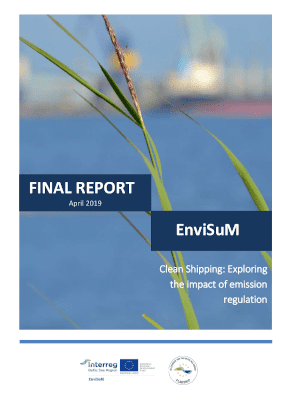
Storymap: Baltic Sea Region Shipping Towards Better Air Quality - EnviSuM results

Decision support tool: SECA investments
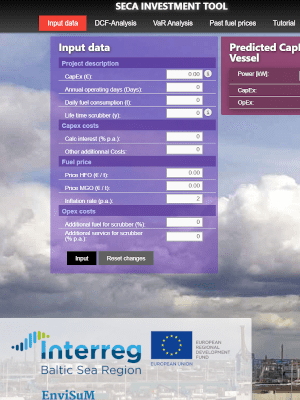
Report: Urban air quality measurements in Gothenburg (Sweden), St. Petersburg (Russia) and the Tri City region (Poland)
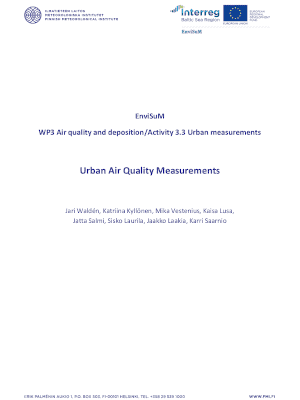
Policy brief: Sulphur Emission Control Area (SECA) Regulation's Benefits Exceed the Cost. Both are Distributed Unevenly
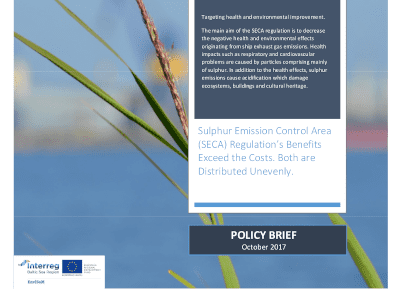
Project Stories
-
21.12.2016
EnviSuM study in Gothenburg proves sulphur emissions reduced by 70%
The Sniffer is a measuring station located at the entrance to the port of Gothenburg, the partners of the EnviSuM project use to remotely measure emissions of ships passing by. Following the introduction of the Sulphur Emission Control Area (SECA) regulations, a recent study by EnviSuM revealed that the port of Gothenburg experienced a major reduction in sulphur emissions by 70 % in only a year.Read full story
Partners
University of Turku
- TownTurku
- RegionVarsinais-Suomi
- CountryFinland
- RepresentativeSari Repka
- Phone
- E-Mail
- Web
Chalmers University of Technology
- TownGöteborg
- RegionVästra Götalands län
- CountrySweden
- RepresentativeJohan Mellqvist
- Phone
- E-Mail
- Web
Maritime Development Center of Europe/The Transport Innovation Network
- TownCopenhagen
- RegionByen København
- CountryDenmark
- RepresentativeJan Boyesen
- Phone
- E-Mail
- Web
Norwegian Meteorological Institute
- TownOslo
- RegionOslo
- CountryNorway
- RepresentativePer Helmer Skaali
- Phone
- E-Mail
- Web
Finnish Meteorological Institute
- TownHelsinki
- RegionHelsinki-Uusimaa
- CountryFinland
- RepresentativeJukka-Pekka Jalkanen
- Phone
- E-Mail
- Web
Maritime University of Szczecin
- TownSzczecin
- RegionMiasto Szczecin
- CountryPoland
- RepresentativeTadeusz Borkowski
- Phone
- E-Mail
- Web
City of Gothenburg
- TownGothenburg
- RegionVästra Götalands län
- CountrySweden
- RepresentativeErik Bäck
- Phone
- E-Mail
- Web
University of Gothenburg
- TownGothenburg
- RegionVästra Götalands län
- CountrySweden
- RepresentativeLars Barregard
- Phone
- E-Mail
- Web
Baltic Marine Consult Ltd.
- TownRostock
- RegionRostock, Kreisfreie Stadt
- CountryGermany
- RepresentativeChristian Wenske
- Phone
- E-Mail
- Web
Nordkalk Corporation
- TownParainen
- RegionVarsinais-Suomi
- CountryFinland
- RepresentativeAnnica Lindfors
- Phone
- E-Mail
- Web
Tallinn University of Technology
- TownTallinn
- RegionPõhja-Eesti
- CountryEstonia
- RepresentativeGunnar Prause
- Phone
- E-Mail
- Web
Baltic Marine Environment Protection Commission - Helsinki Commission (HELCOM)
- TownHelsinki
- RegionHelsinki-Uusimaa
- CountryFinland
- RepresentativeHermanni Backer
- Phone
- E-Mail
- Web
-
Project managerSari RepkaUniversity of Turku
-
Legal representativeTommi InkinenUniversity of Turku
-
Financial managerMirja JyrkinenUniversity of Turku
-
Communication managerMinna AlhosaloUniversity of Turku


